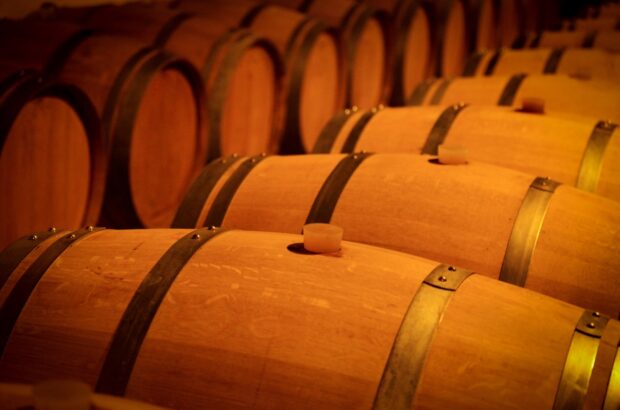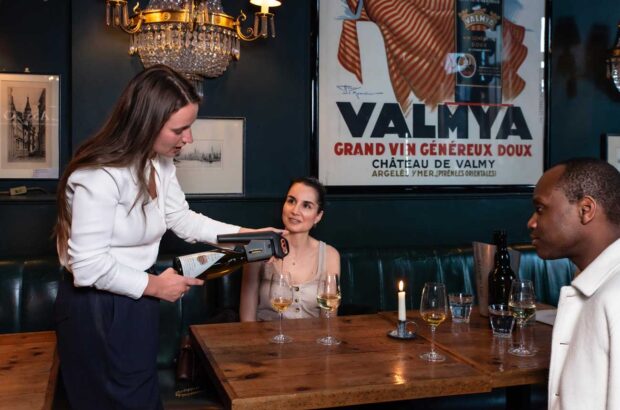Port is a delectable drink.
A Vintage’s nuanced complexity is worth investing years of cellar space for, a Tawny’s layered organoleptic profile is a surprisingly versatile food-pairing tool, and a White Port makes for a superlative summer beverage – ideally with a splash of dry tonic water, some ice, and a sprig of mint. Despite its qualities, Port has long been struggling to match its status and fascinating history with a comparable degree of enthusiasm among younger wine drinkers. Yet, Port might have found in a new generation of industry leaders its ace in the hole.
Zoe Graham entered her family business as Churchill’s sales and marketing director just before the pandemic broke out, after a decade spent working for Moët Hennessy in Paris and London and brand consultancy firm Flamingo, in São Paulo, Brazil. Since then, she’s been busy rejuvenating the image of Churchill’s Port, which her father Johnny founded in 1981.
‘One of the challenges we face today is how to re-introduce Port to a new generation of drinkers… It’s a category that people don’t really understand. It’s not just something that sits in a cabinet and that you serve after dinner. It’s a living, breathing, elegant wine… We want to let the wine do the talking,’ she says, hinting at the reasoning that led her to rebrand Churchill’s Port.
A two-year undertaking, the recently unveiled rebrand empathises with modern wine drinkers by integrating elements that symbolise care for the environment and a less stuffy, more social aspect of Port consumption into its logo. Churchill’s wine is also dressed in a slicker, more contemporary packaging. ‘What type of restaurants do people want to go to? What beauty products do they use? It’s always about top quality ingredients so… I wanted to elevate the look and feel [of the bottles] to fit that sort of profile,’ Graham says.
The redesign involved the introduction of minimalist, diamond-shaped labels too, elegantly monochrome for all Ruby expressions and somewhat chromatically diverse for the Tawnies (see below).

The Churchill’s rebranding includes new diamond-shaped labels
Combined with the liquid’s vibrant colour clearly visible through the bottle’s white glass, the Tawnies’ more colourful aesthetic is designed to tap into the growing appeal of aperitifs by presenting them as convivial pre-dinner drinks. ‘We’re playing on that sense of occasion, shifting the cultural perception that Port always comes at the end of the meal. We need to [understand] people’s lifestyle and drinking habits, and find a place for Port within their drinking repertoire,’ she says.
Pushing Port as a mixable beverage may help establish the freshest Port categories as pre-meal drinks, too. ‘It definitely took a while to persuade my father to drink White Port with tonic [Portonic]. This is not something that he did initially. But he has come around to the idea that if this is a way to introduce new people to Port, then we should definitely be open to that.’
While she welcomes Port & Tonic as a valuable drinking experience, Graham rejects the wider cocktail route as a means to attract new wine lovers. She is particularly suspicious about the potential of recently launched ready-to-drink canned Port & Tonic cocktails to really benefit the category in the long term.
‘Portonic in cans is definitely something that’s moved the Port category. Whether it’s going to cut through the big budgets behind drinks in cans though, I’m not sure. But it’s not for us, we are a boutique brand and don’t have a production that could sustain those volumes. We need to go beyond cocktails. I’m not saying that you can’t push the category forward by putting Port in cans or [suggesting] new serves, but people just want to enjoy port as a wine.’
Rather than presenting it as a mixing ingredient, Graham believes that Port can maintain its ‘integrity intact’ by maximising the potential of oenotourism, capitalising on the growing number of younger consumers appealed by Port’s fascinating heritage.
‘One of the really exciting things in Portugal is that in 2019 we saw the biggest numbers in tourism coming into Porto and in the Douro, ever. And even though we have experienced a pause during Covid, those are not going away,’ she argues. ‘We have young, interested consumers coming to our region, which never used to happen. People are just desperate to learn more about this amazing wine.’
To enhance her educational efforts, Graham is also establishing a closer connection with wine lovers. In full second-wave lockdown, Churchill launched Port.Club, an initiative targeting both Port lovers as well as ‘Port curious’ drinkers. Essentially a subscription service, the club entitles members to a quarterly pack containing three bottles of Port of a diverse stylistic range: an everyday Port, a special-occasion one, and a Club Port uniquely crafted for members. The box features tasting notes and, crucially, online education experiences including virtual tastings with Churchill’s own founder Johnny Graham himself.
‘We must establish the communications channel and educate as many people as possible explaining that you can serve Port on different occasions. Once you do that, Port suddenly gets out of that nebulous confusion and people are converted.’






